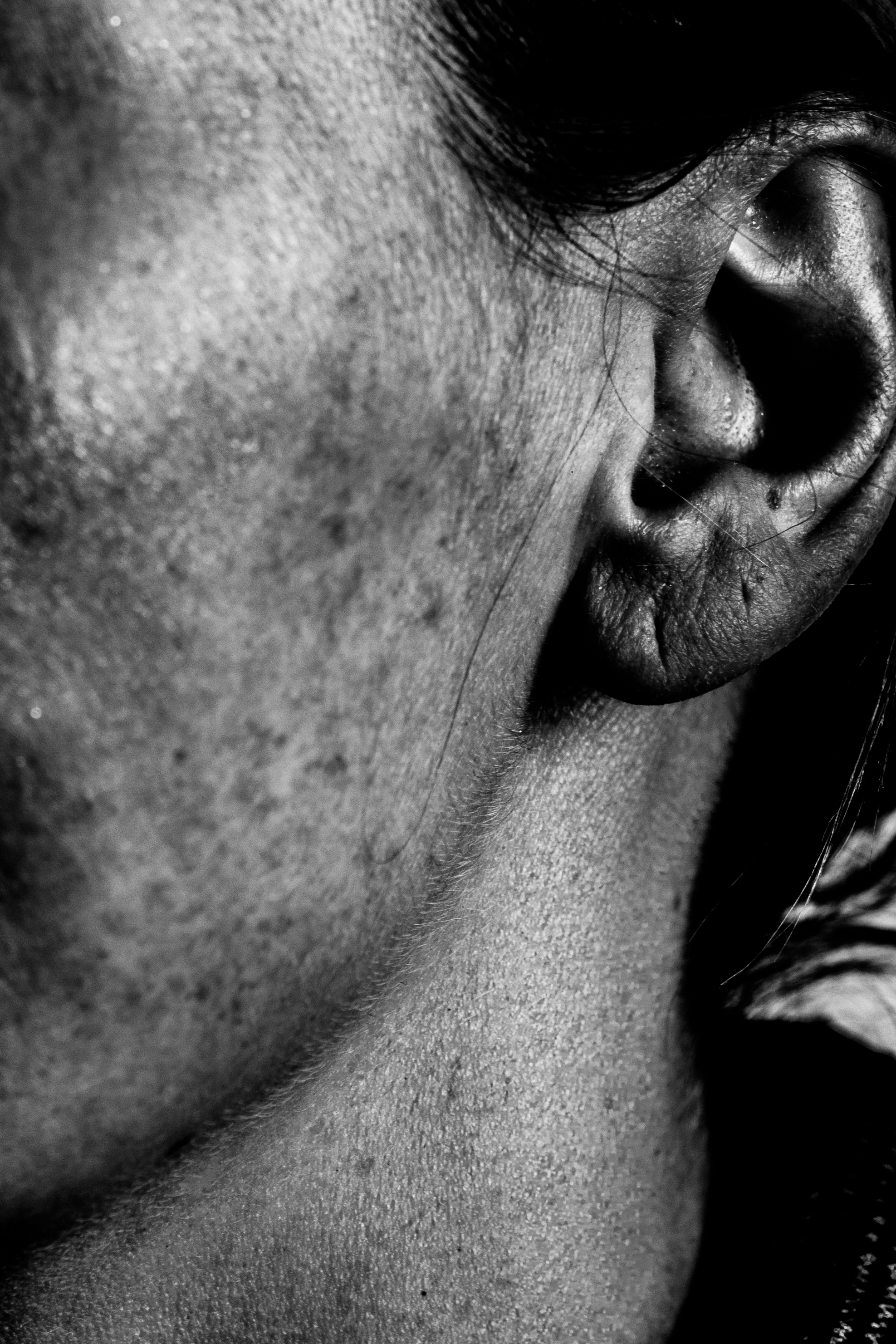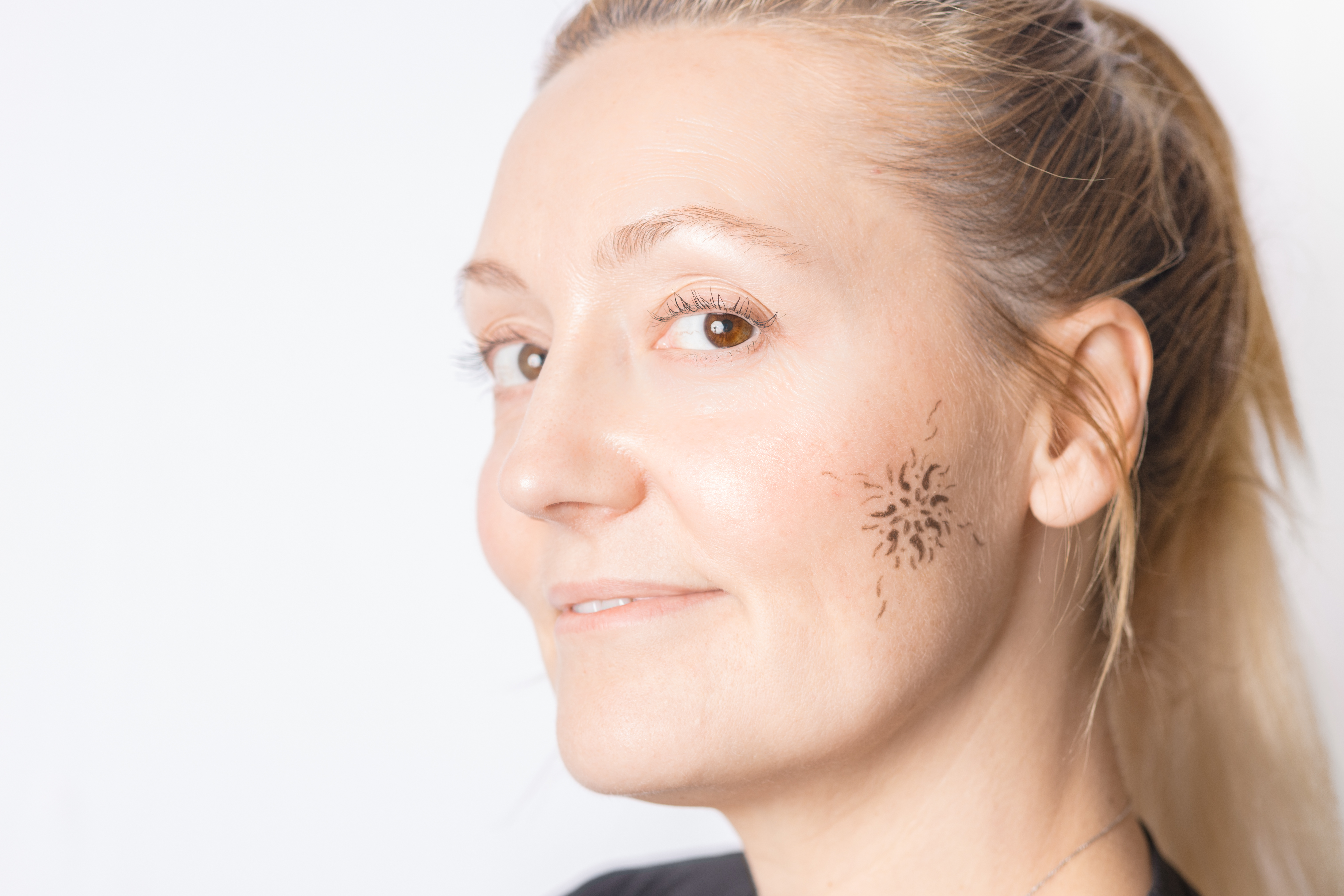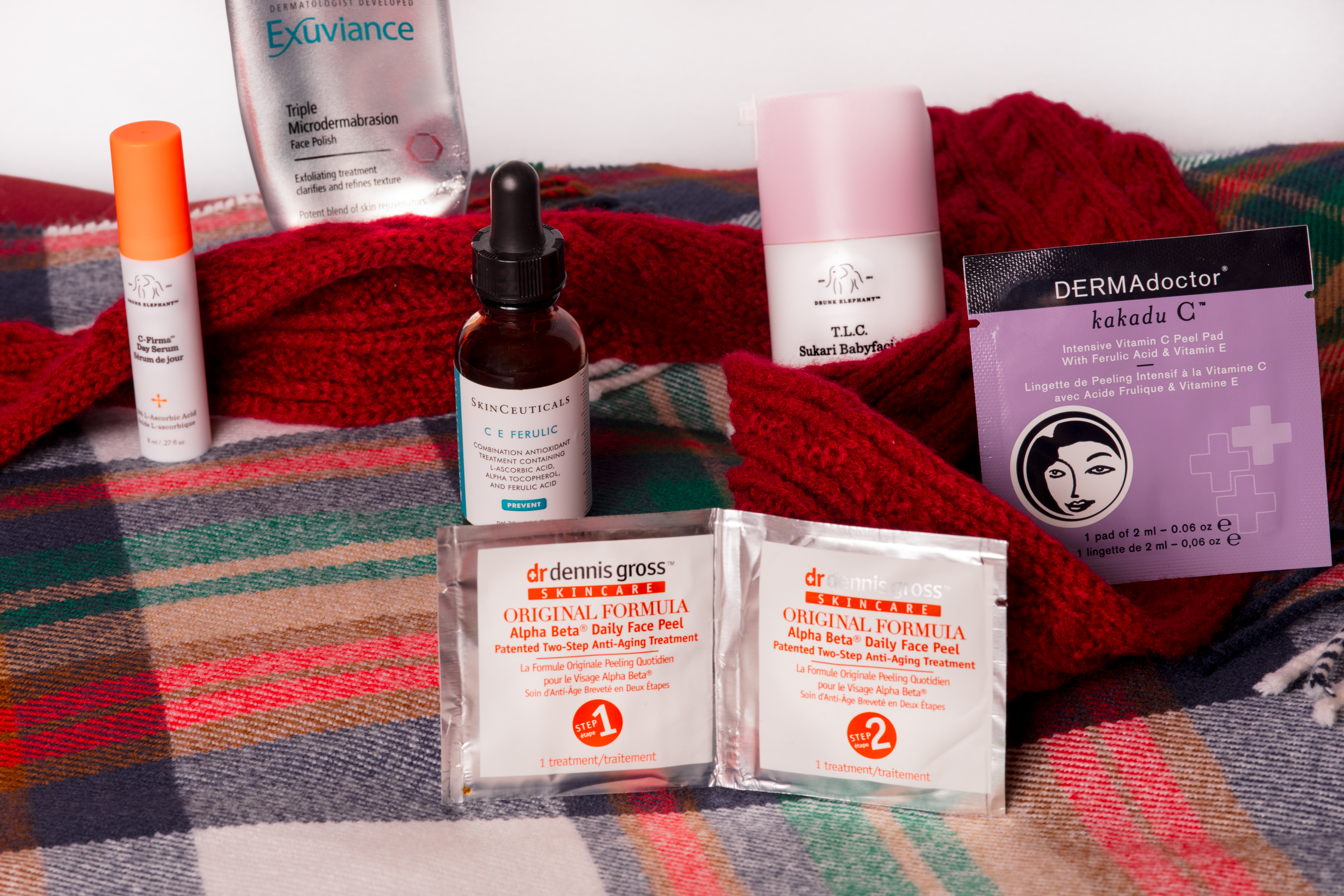
Melasma
I had no idea what melasma was until I was pregnant. I never had as much as a freckle on my face beforehand. I didn’t even really notice it until after I delivered my baby. It started out as uneven, light brown patches on my cheeks. Those patches went from light to dark in the summer time when I was outside more.
What I learned from my summer time hyperpigmentation fun was that I was not doing a very good job at applying my sunscreen. I was not applying enough sunscreen to my cheeks and just a few hours in the sun produced giant patches of brown on my cheeks (it looked like someone flicked a paint brush covered in brown paint at my face).
I now begin my sunscreen application at my cheeks and take extra time to make sure I have adequate coverage, not just on my cheeks but all over. In addition to proper and adequate application of sunscreen, I used (and still use) other methods to keep my melasma at bay.

What is Melasma?
We all have cells in our skin that produce a pigment called melanin. How much melanin we have is primarily genetically determined; the darker your skin the more melanin you have. Excess melanin production occurs when the cells are stimulated by hormonal fluctuations, heat, and/or UV light.
The current school of thought is that melasma is hormone related, specifically estrogen, which is why it is often referred to as the “mask of pregnancy” (men can also be affected but far less frequently than women). It usually shows up as brown or grayish patches on the face, forearms, chest, and/or neck.
How to Treat Melasma:
If you have melasma there is hope. You can get rid of it. If it occurs during pregnancy, it may fade on its own after delivery of your baby. If it does not fade, there are things you can do to move things along.
Exfoliate to help with skin cell turnover and apply topical products that contain ingredients that help break down existing melanin and/or prevent new melanin from forming.
Look for the following ingredients:
- Hydroquinone, naturally found in berries and wheat, is a topical skin lightener that works well, but there has been some controversy over its use. It works by breaking down existing melanin and destroying the cells that produce melanin so new melanin cannot form. Killing off the melanin cells could cause the skin to darken (a condition called exogenous ochronosis) but this is extremely rare & has only been reported in those who have used hydroquinone for a prolonged period of time (more than 6 months). It is also believed that the ochronosis is not caused by hydroquinone but by additives like mercury and resorcinol in unregulated markets. Another reported issue is skin irritation, but this can be alleviated by using a lower concentration. If you decide to use hydroquinone try not to use it for longer than 6 months at a time, especially if you have darker skin naturally (some dermatologists recommend using it no longer than 3 months at a time). Typically you should see results after 4 weeks of use. One to try is Porcelain Skin Whitening Serum. This one also contains kojic acid and licorice.
- Kojic acid, naturally found in soy and mushrooms, will prevent new melanin from forming. Porcelain Skin Whitening Serum contains licorice and hydroquinone as well.
- Retinoids, synthetically produced, prevent new melanin from forming and boost cell turnover which helps to get rid of hyperpigmented cells. As an added bonus, retinoids help with collagen and elastin production which will aid in reducing fine lines and wrinkles. Retinoids can cause skin irritation but this can be alleviated if you apply a moisturizer as well. Stronger retinoids require a prescription but you can purchase some great lower concentration retinoid products like Rodan + Fields Redefine AMP MD System, Skin Medica and Replenix.
- Vitamin C, naturally found in citrus fruits, prevents new melanin from forming. I use and love Skinceuticals CE Ferulic, Drunk Elephant C-Firma Day Serum, and Dermadoctor Kakadu C Intensive Vitamin C Peel Pads.
- Glycolic Acid, an alpha-hydroxy acid, decreases melanin. Exuviance Triple Microdermabrasion Face Polish, Drunk Elephant TLC Framboos Glycolic Night Serum, Drunk Elephant TLC Babyfacial, and Dr. Dennis Gross Alpha Beta Extra Strength Daily Peel Pads are all great products. For the very different skin on my body, I use and love Glytone Exfoliating Body Lotion.
- Lactic acid, found in milk and sugars, prevents melanin from forming. I use and love Dermadoctor Kakadu C Intensive Vitamin C Peel Pads. Another option is Dr. Dennis Gross Alpha Beta Extra Strenght Daily Peel Pads.
- Licorice, natural root, prevents new melanin from forming and reduces inflammation. I love the products by Tatcha and they have a Deep Brightening Serum with licorice root extract. The full size is a little spendy at $185 for 50 ml (1.7 oz) but they offer a travel size at $39 for 10 ml (0.34 oz). My personal philosophy is to get free samples, if I can, to try products before I buy them. If free samples aren’t available, then I look for travel size options which will be significantly cheaper than the full size versions. This way, if the product does not work for my skin I am not wasting my hard-earned money.
- Niacinamide, studies have shown that niacinamide decreases hyperpigmentation after 4 weeks of use. Find niacinamide in Paula’s Choice Boost 10% Niacinamide Booster.

Melasma is exacerbated by exposure to the sun, so it is also highly recommended to wear broad spectrum sunscreen of at least SPF 30 every day (this is something you should do even if you don’t have melasma).
It is possible to over treat melasma, which will cause it to worsen. Avoid treatments that cause heat or friction including laser treatments and high concentration chemical peels.
How I Treated My Melasma:
So how did I treat my melasma?
I did not use hydroquinone products simply because I did not want to add another product to my routine. I like to keep things as simple as I can, so I try to find products that can multitask and that I can use every day as a part of my routine. That is why I chose to use exfoliation and a vitamin C serum. Although it took about 6 months for my brown spots to fade, they did fade. I also received the amazing benefits of the vitamin C.
Key points:
- Wear sunscreen with SPF 30 every day!!!
- Exfoliate to help skin cells turn over.
- Apply topical products that contain any of the ingredients listed above.
- If you want quick results (in skincare that means weeks to months instead of instantly) use a product that contains hydroquinone.
- Avoid laser treatments and high concentration chemical peels.
- Wear sunscreen with SPF 30 every day!!! (I know I already put this one in here but it is that important.)
- Consult your dermatologist or aesthetician.

References and Further Reading:
https://momlovesbest.com/skin-changes-during-pregnancy
Treating Difficult Melasma Cases
Exogenous Ochronosis after Prolonged Use of Topical Hydroquinone (2%) in a 50-year-old Indian Female
Skin Lightening Preparations and the Hydroquinone Controversy.
Topical treatments for melasma and postinflammatory hyperpigmentation.




3 Comments
Pingback:
Pingback:
Mirtha Marquardt
Melasma • Transcendermal article is very useful and well researched.
This helped me a lot with my skin. Be beautiful, you deserve!